The process of planting several hundred peaches is a little bit more involved than just stepping outside and picking up a shovel. Yeah, there’s still a shovel – but it definitely doesn’t start there. If you’re interested in how we got from start to finish so you can plant your own trees successfully, keep reading.
Site Selection
If you want your trees to truly thrive, there is no more important step than site selection. When deciding where to plant, we made sure all these boxes were checked:
- Good Soil pH
- Proper Drainage
- Desirable Soil Consistency
- Access to Water
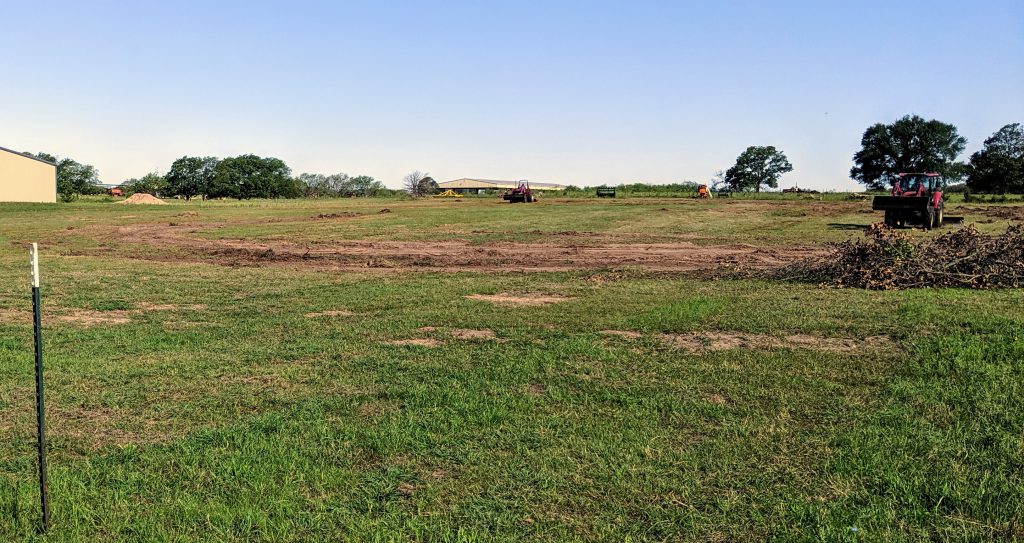
Good Soil pH
If the pH of your soil is too high or too low, your plants simply cannot take up the nutrients that are in the soil. The tree will be stunted and will suffer from little to no vigor whatsoever. Taking a soil sample is very easy and doing it up front will save you from the heartache of planting a tree only to learn later that there was never any hope of it doing well in the first place.
Our soil samples came in with a pH of 6.2, which is well within the range for the trees to do well. Typically, you want a pH as close to 6 as possible. The further you get from that (upwards or downwards,) the less likely that your tree will thrive. Anything with a pH of 7 or higher, I wouldn’t even bother trying.
Proper Drainage
Peach trees can drown. If their roots stay submerged under water for too long, the tree will die. Just like you, the roots need oxygen. If there is standing water above the roots for too long and the soil doesn’t dry out, the roots will die – and the rest of the tree along with them.
Desirable Soil Consistency
This pairs closely to the need for proper drainage. Soil that is heavy in clay will not drain well and that can stunt, or even kill, a tree. Peaches prefer a mix between clay and sandy soil. The sand content allows for the soil to drain out, and the clay content allows for the soil to retain some moisture over a longer period of time.
Access to Water
Not too long ago, most peach trees in this area were planted and grown without irrigation. While they certainly can grow without supplementary water, having access to water will allow your trees to be full of new growth in even the driest of Texas summers. We add nitrogen fertilizer to the ground to aid in tree growth, but doing so increases the tree’s need for water. Having consistent irrigation allows us to fertilize confidently knowing that we wont stress the tree if it doesn’t rain like we were hoping it would.
Site Preparation
The future growth of your trees depends a lot on what you do before you even plant it.
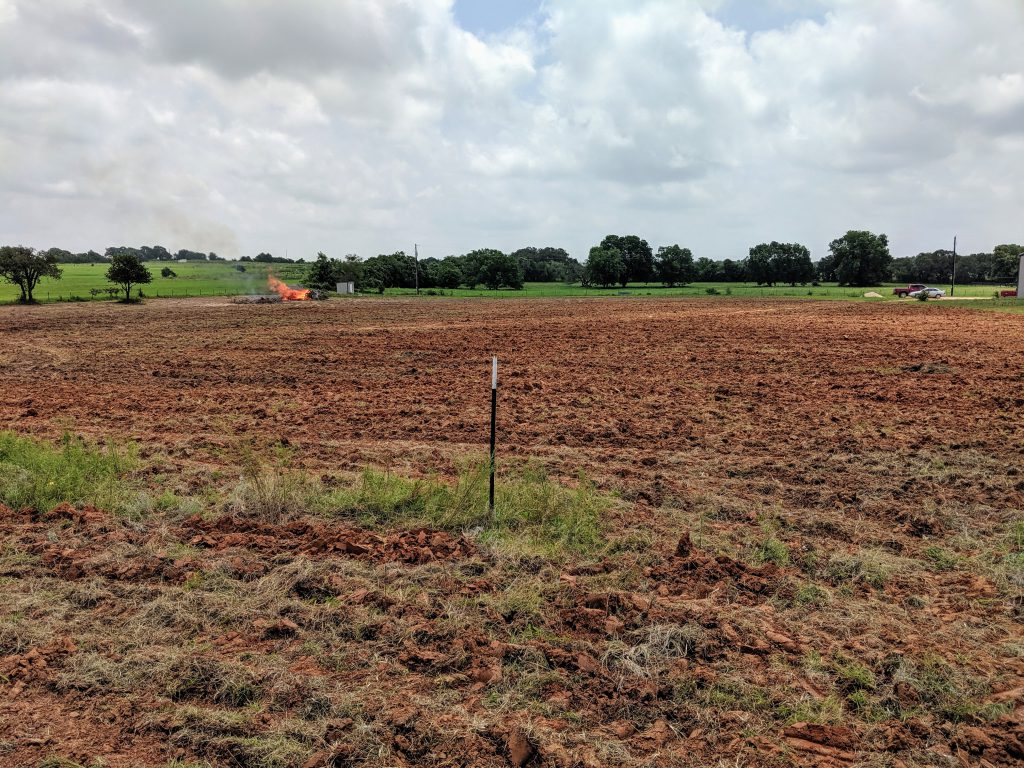
Kill the Weeds
Grasses and weeds can reduce the first year growth of a newly planted tree by as much as 90%. We want our trees to grow as fast as possible, so we cant ignore that threat. Grass and weeds are exceptionally good at fighting for every bit of available water and nutrients that are available to them. Your new tree on the other hand will have poorly developed roots and be at a distinct disadvantage. We chose to plow the area to remove the grass, but you could just as easily put down a tarp or something else to block the sunlight where you want to plant your trees if you’re only planting a few of them.
Raised Beds
While our site has a nice slope to help drain water off of it, we made raised beds so we could be certain our trees wouldn’t ever be left standing in a pool of water. We used a grading blade to make long straight rows of raised beds.
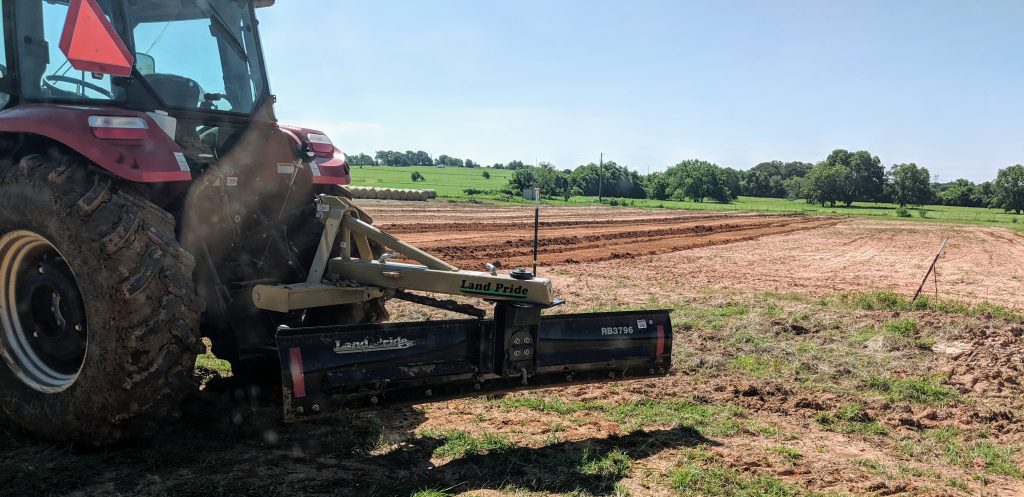
Once all the soil was mounded up, we smoothed it out into rows that changed in elevation from row peak to row center by only about 12 inches. This ensures that water will roll away from the trees at the top of the peak and then roll down the hill.
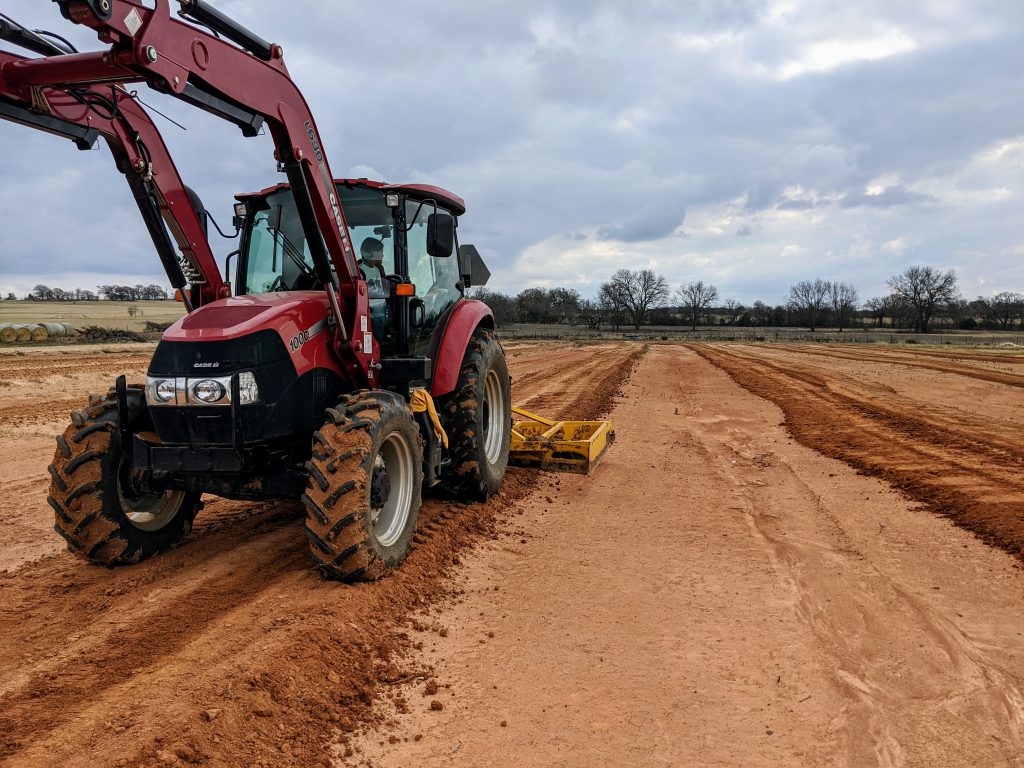
Planting The Trees
After all the site preparation was done, we were ready to plant the trees. Unfortunately you can’t just go grab the shovel immediately. There’s actually a proper time of year to plant trees.
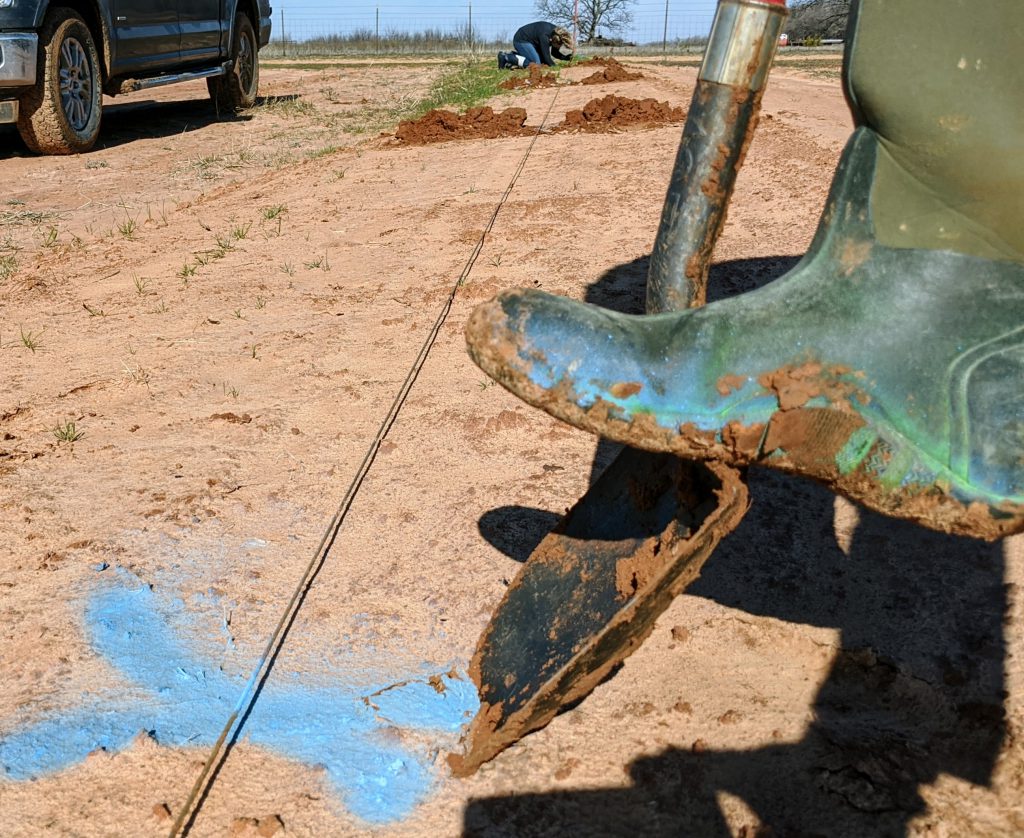
Wait for Winter
Wait until mid winter to plant your trees because that’s when trees are dormant (sleeping). Digging up and transplanting a tree that’s actively growing is unnecessarily hard on the tree. I know it’s far more tempting to pick up a potted tree in the spring that has green leaves already flowing out of it, but if you’re a smart customer you’ll buy and plant them in the winter like somebody who actually knows what they’re doing.
Buy The Trees
So maybe that seems a bit obvious that you need to buy the trees, but there’s a more to it than you might guess. First of all, your local stores probably don’t have fruit trees to buy in the winter because they have a hard time selling ugly sticks in buckets of dirt. They wait to until everyone has spring fever and wants trees that already have leaves on them. You’re smarter than that though. Instead, you guys seriously need to get ahold of the folks at Womack Nursery in DeLeon, Texas. They will tell you what grows well in your area and sell you healthy bare root trees that are cost effective and easy to plant. Naturally Womack Nursery opens around December and they sell through most of their stuff within just a couple months. If you wait until the spring to get ahold of them you’re going to be disappointed when they’re sold out of everything.
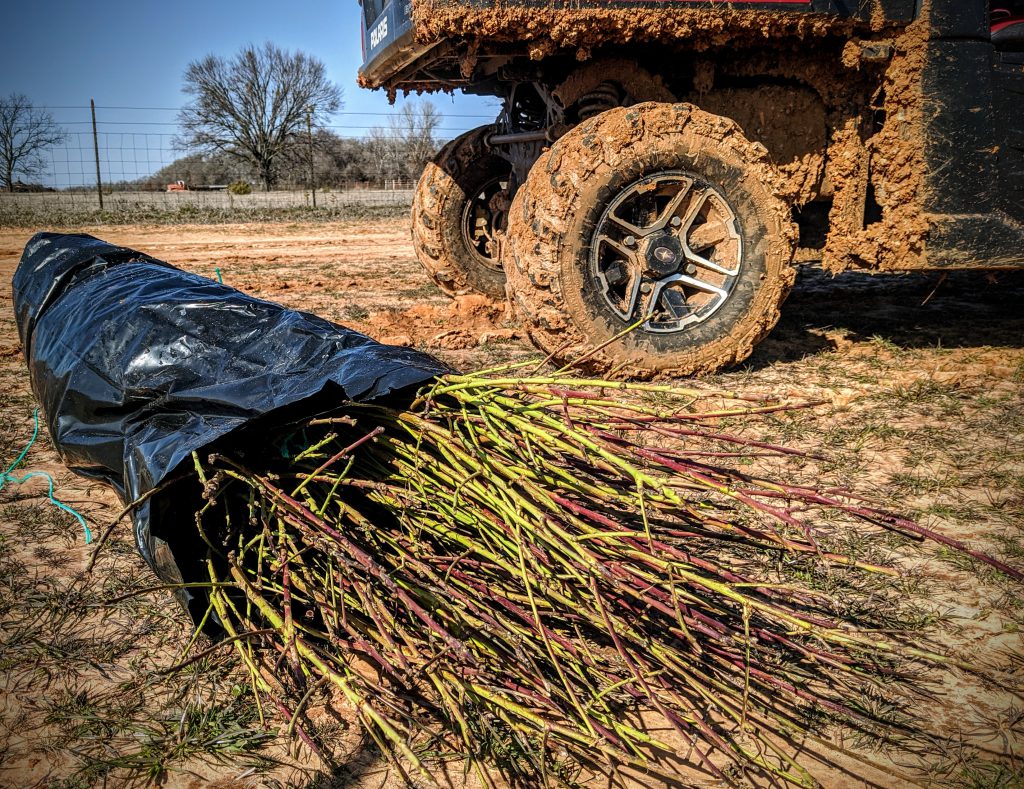
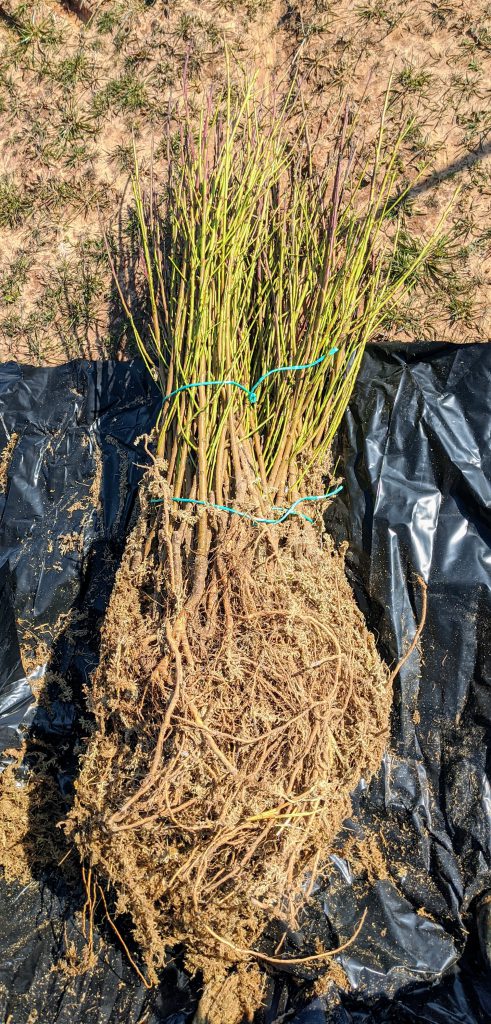
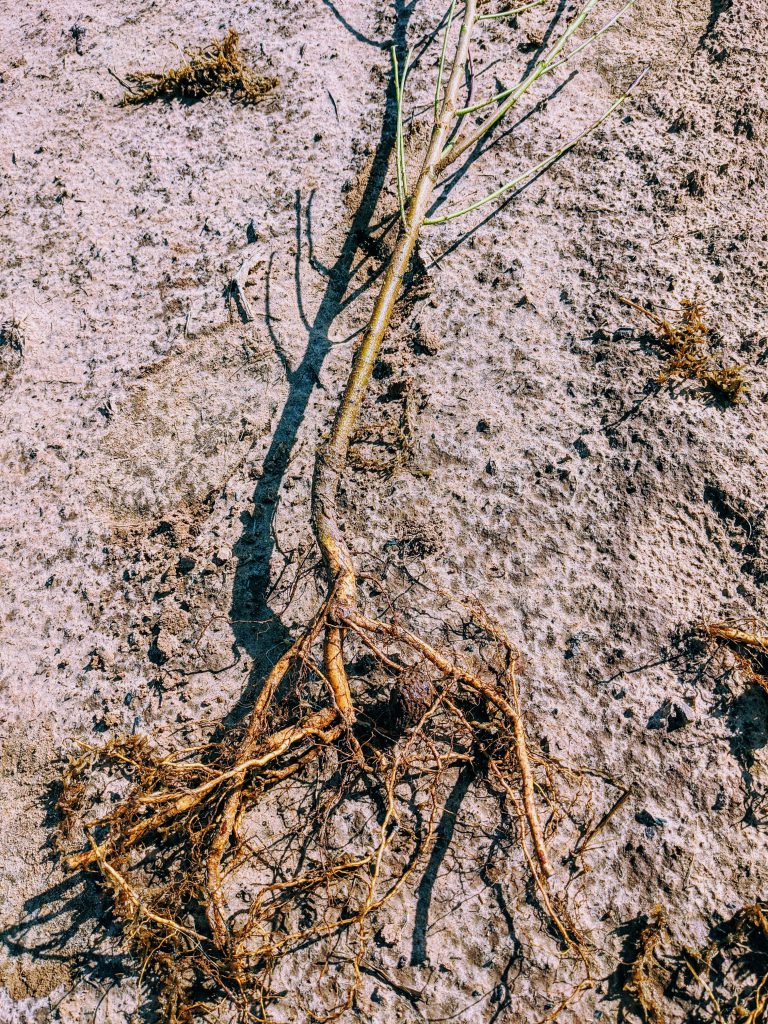
Measure the Spacing
The experts in Texas suggest a spacing of 25ft x 25ft if you’re planting trees without irrigation. If you’re planting them with irrigation you can put them as close together as 18 feet, but that wont leave you any space between them when the tree is full size. We plant our trees in an 18ft x 24ft spacing to allow room for the tractors to drive between them once they’re full grown. A full size peach tree will reach out nearly 18 feet in diameter.
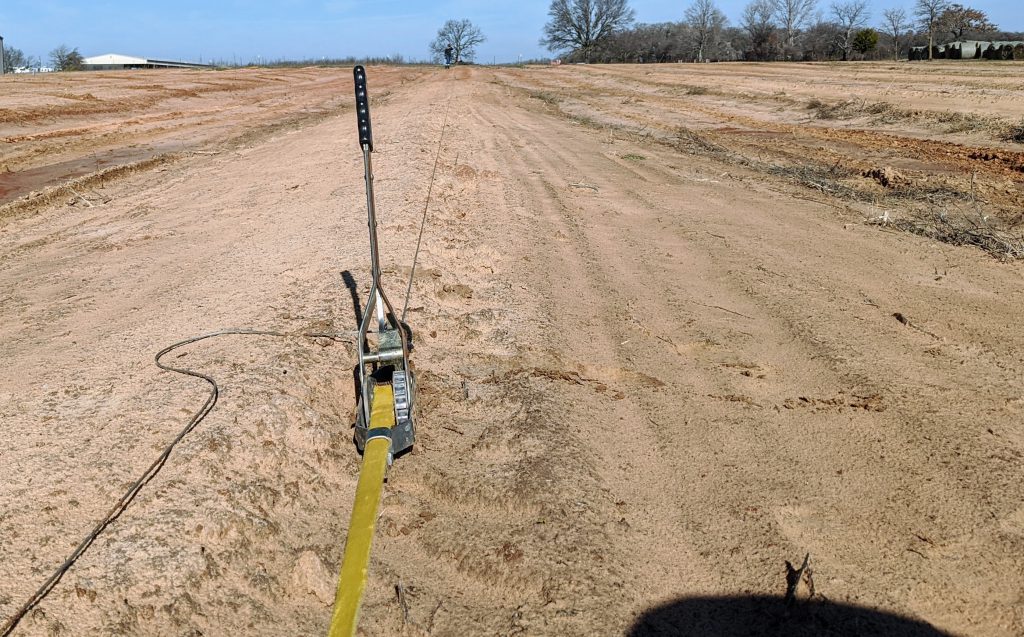
When we make a row we stretch a cable between 2 t-posts. Once the cable is straight and tight we mark each planting location every 18 feet along the cable. This ensures the rows are all straight and that the trees are all planted the same distance apart.
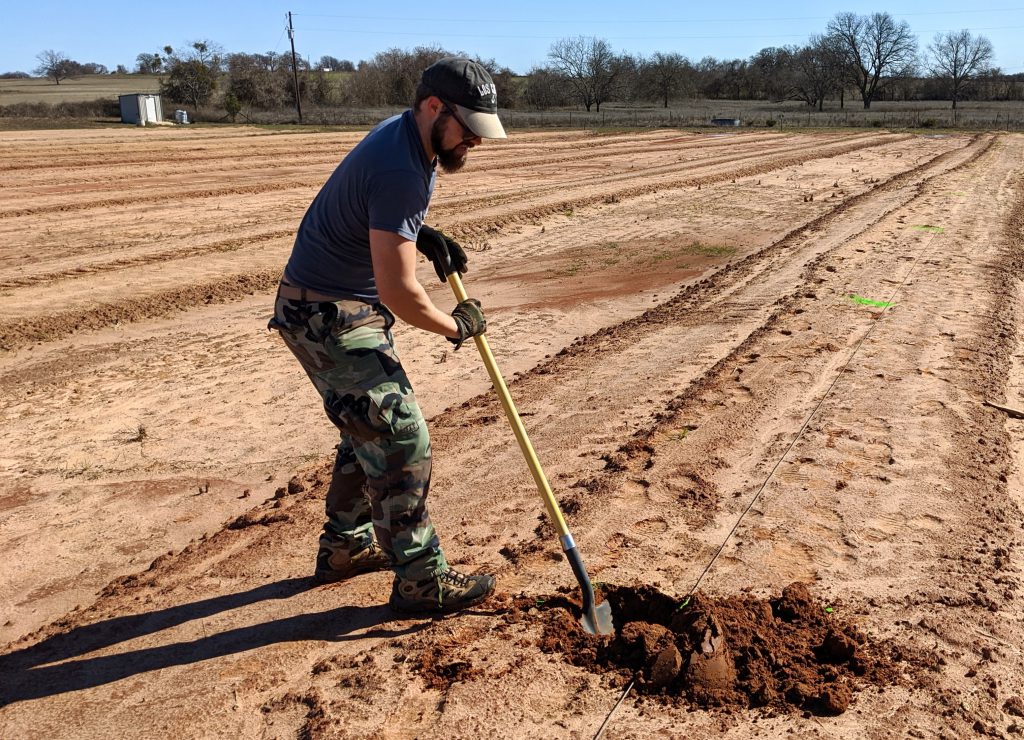
Unlike potted trees, you’ll have to carefully plant bare root trees at the correct depth. Part of the tree is made to live above the ground, and part of the tree is designed to live under the dirt. Making sure you put each part where it goes is important. Usually it’s fairly easy to tell where the tree changes from bark to root if you just take your time and look. That’s where you want the soil level to touch.
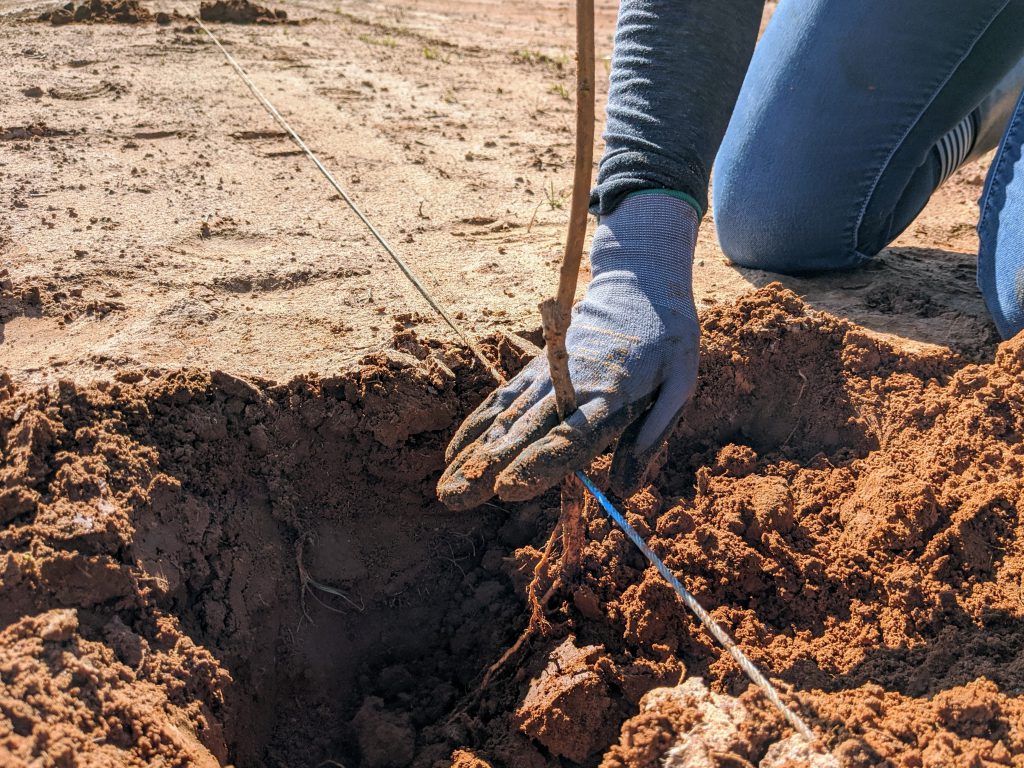
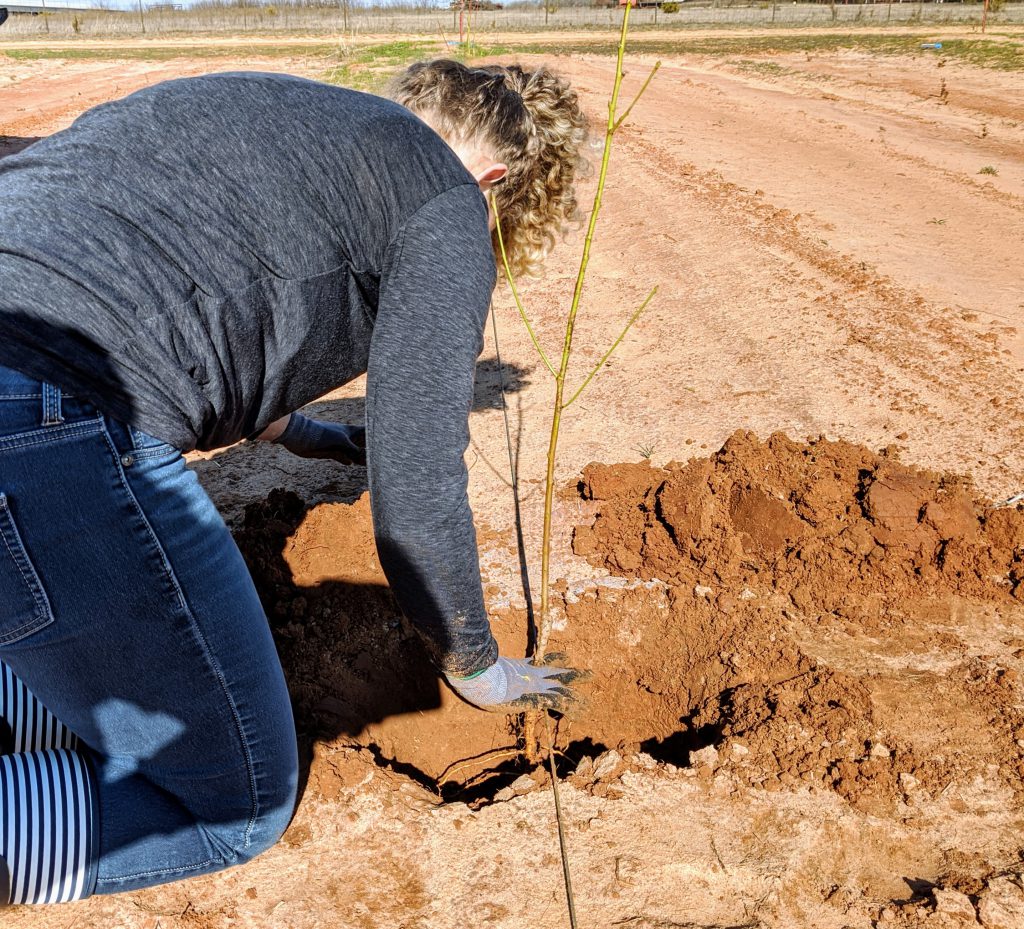
Water and Wait
You’ve done all the hard work. The tree is in the dirt and ready to explode with green leaves when the winter finally lifts. If the soil wasn’t moist, then water in the tree so that the roots don’t dry out while waiting for that first spring rain.
The next step if going to be to prune the tree down to about 18-24 inches tall, but that can wait another week while you rest up.
Spring is right around the corner and the work is just getting started.
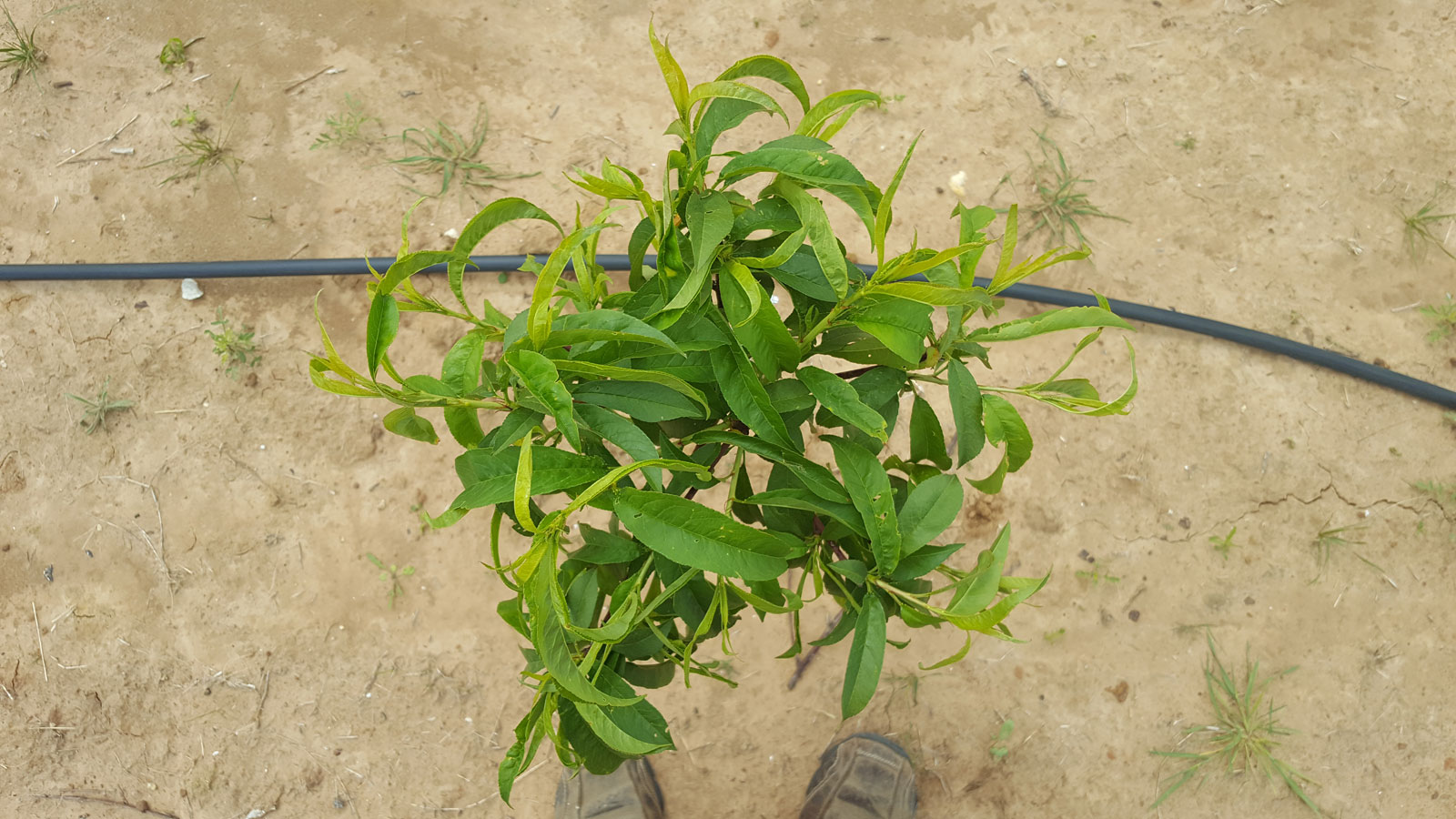
Wonder what to expect over the next year? If you’ve done it right, your peach tree should grow A LOT over the next year.


[…] if we weren’t planting a new block of trees in the orchard we would still need to plant new trees each year. For one reason or another some trees simply […]